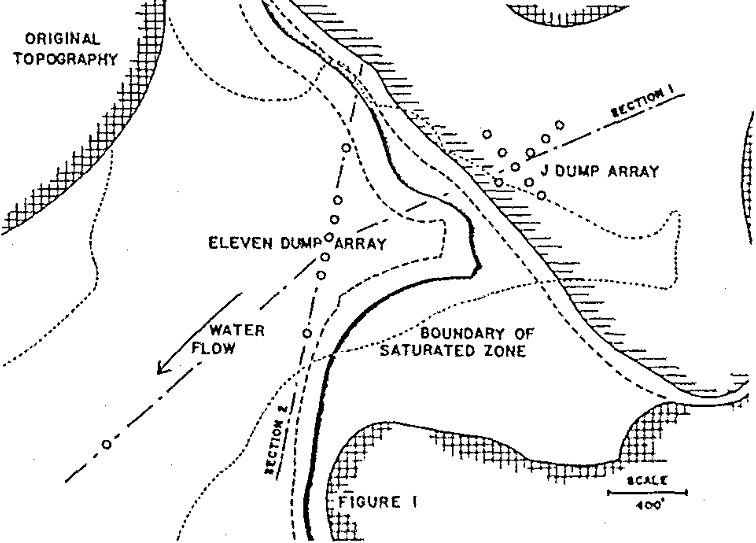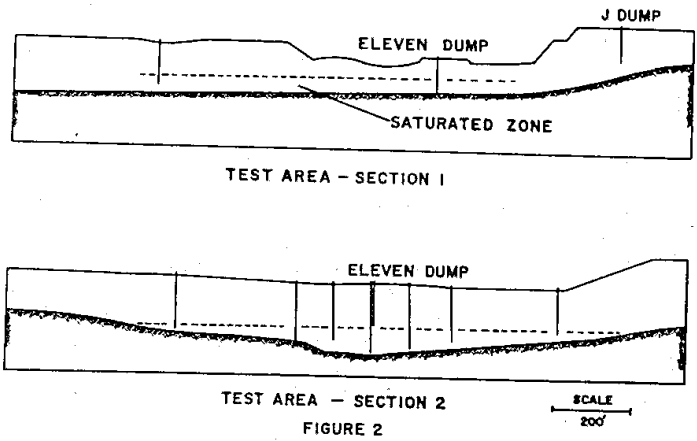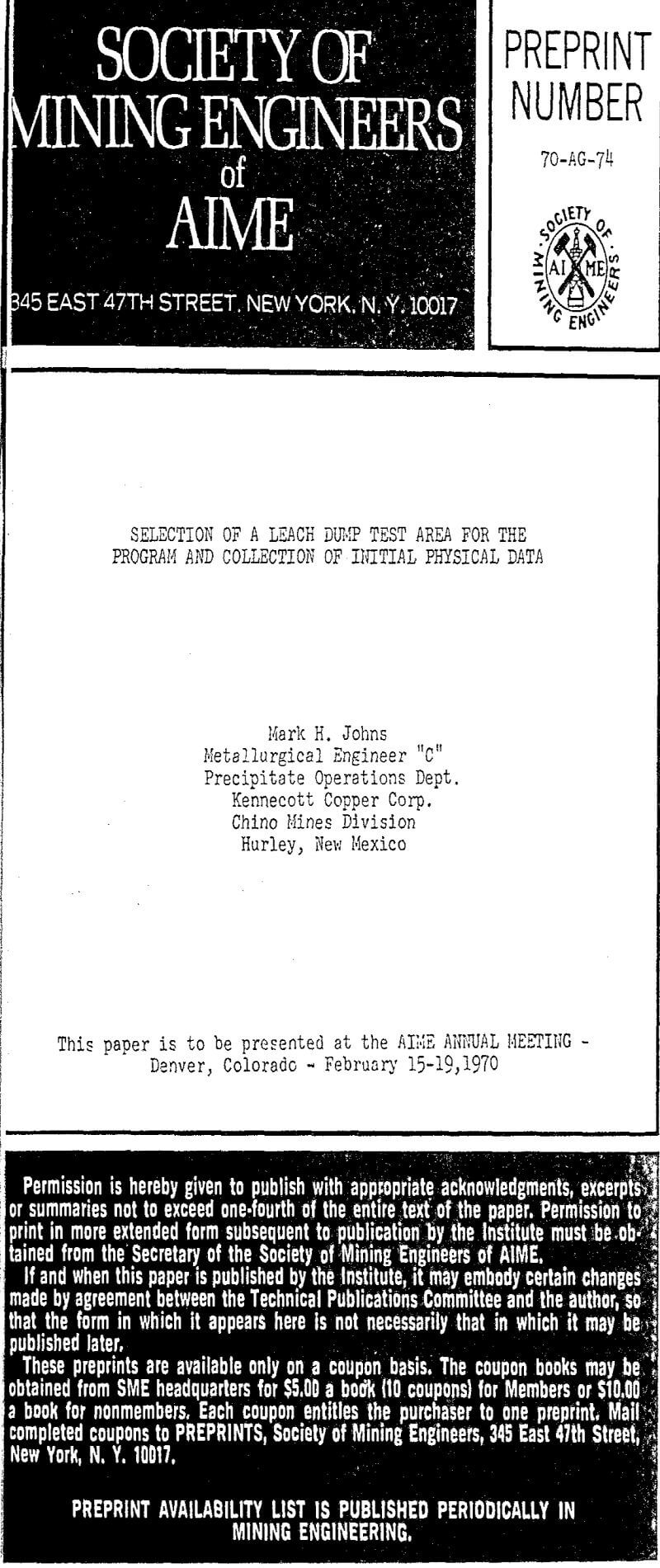Leaching of waste material at Kennecott’s Chino Mines Division at Santa Rita, New Mexico, has been accompanied by increasing difficulty in circulating leach solutions through the dumps. As a means of recognizing existing problems and considering alternative applications of the leaching concept, a leaching research program was proposed which could be applied to a specific, typical waste dump. Conclusions derived from the area could then be applied to other leaching areas at Chino.
Preliminary field data acquired through Becker drilling and logging determined the final configuration of facilities for a tritium tracer test which was conducted as a portion of the research program. The data have led to recognition of several leaching problems which were previously unknown, and which appear to be relatively common throughout Chino’s waste dumps. The data have also served as a positive basis for an evaluation of all testing designed to improve leaching and for decisions regarding future research goals and impact.
‘Chino’s J dump was selected as a leach dump test area for a leaching research program on the basis of four general characteristics:
- The initial copper content of J dump was high and the apparent copper recovery through leaching is low. The current copper grade averages 0.14% and the total recovery through leaching the area over a 10-year period is estimated to be lower than 50%.
- The dump has a low permeability as a result of material degradation and a high fines content. Feldspar rock types represent a portion of the waste material, and these rock types decompose into impermeable clays. The high percentage of fines has resulted from the mining operations and other processes, such as leaching, which cause rock decomposition. Numerous compacted zones also exist within the dump. The resultant poor permeability in this area has severely restricted the effectiveness of leaching.
- A well defined drainage channel underlies the dump (Figures 1 and 2). This characteristic permitted assurance in placing drill holes which would properly monitor the flow of water through the area.
- The dump is high, a characteristic which provided an excellent hydraulic gradient for water flow studies.
A data collection program was proposed to’thoroughly evaluate pretest conditions within the dump. The primary objective of the program was to provide drill holes which would continuously-monitor water flow throughout the area during an extended period of time. Additional objectives were an accurate determination of subsurface topography and an interpretation of the dump’s structure through sampling and well logging techniques.
Samples from the drilling were used in determining leaching history, rock types, assay, permeability characteristics, and estimated future recovery of copper through leaching. Variations in permeability, which are associated with a wide range of clays and fines, exist throughout the area. Cementation of the dump from chemical salts also contributes to poor permeability. The degree and effects of leaching varied from good leaching to poor leaching.



